- Home
- Mark R. Levin
Plunder and Deceit: Big Government's Exploitation of Young People and the Future Page 15
Plunder and Deceit: Big Government's Exploitation of Young People and the Future Read online
Page 15
Preserving the peace means being prepared for war. That is history’s lesson. The grave and mounting national security threats confronting America today, and the potential for future military conflict, make the simultaneous hollowing out of the United States military and imprudence in the conduct of the nation’s foreign policy (particularly in the last decade or so) profoundly challenging to the country generally and the rising generation most predominantly. No group of Americans should be more alert to these gathering storm clouds than younger people, for it is they who fight the wars and, therefore, pay the greatest price.
The national debt—that is, the unfunded liabilities and fiscal operating debt—amounts to tens of trillions of dollars. The Government Accountability Office, the Congressional Budget Office, and numerous other public and private institutions have sounded warning alarms about the oncoming crash. But no serious or effective steps have been taken to address this simmering financial and economic implosion. It is, after all, far easier for today’s statists to dole out money not yet earned by future generations not yet born and be lauded as compassionate, thereby reaping media plaudits and political benefits for generational wealth redistribution, than to be accused of denying subsidies and programs to a growing list of “worthy” and needy recipients and suffer the media and political backlash. Nonetheless, the governing generation’s self-deception (or worse) does not and will not avert the inflating debt bubble, which will eventually burst and flatten the society, turning promises of utopia into the reality of dystopia for future generations.
And at the center of what is left of the American republic is the Constitution. The Constitution is the bedrock on which the nation was built. As Thomas Jefferson explained, “Our peculiar security is in possession of a written Constitution. Let us not make it a blank paper by construction.”2 These days, the law is frequently used by the statists against the individual—to exploit his labor and expropriate his property, to repress his free will and compel his conformity. Rather than securing liberty and ensuring justice through the Constitution’s prescriptions and proscriptions, the statists’ perversion of law has become the government’s most potent weapon against its original purpose. Thwarting the steadily growing tyranny of an illimitable federal government by re-establishing constitutional government is of paramount importance if future generations are to live and prosper in a free and open society.
On October 7, 1771, Samuel Adams declared, “the necessity of the times, more than ever, calls for our utmost circumspection, deliberation, fortitude, and perseverance.”3 Adams’s words should echo throughout the land in the form of this New Civil Rights movement of which I speak. It must be a vigorous movement of the rising generation—of younger people who no longer rely almost blindly on the “good intentions” of the statist masterminds and the governing generation who dominate the direction of society, and who have built a governing federal edifice that uses deception and force to plunder their future and, thus, victimize them.
The time has come for the rising generation to turn down the demands and schemes of centralized government, its surrogates, and those who steal from the future and look for ways to influence and drive public policy debates and outcomes in all its forms. It must inject itself into purposes and events that affect its well-being and save the future from those who continually loot it. It must populate the very ranks of the institutions requiring reform to change them from within—such as elective office, the administrative state, teaching positions in public schools and universities, and entertainment and the media. As I explained in Liberty and Tyranny: “The Statist does not have a birthright ownership to these institutions. [We] must fight for them, mold them, and where appropriate, eliminate them where they are destructive to the preservation and improvement of the civil society.”4
This new movement must vigorously and resolutely engage socially, culturally, and politically. From the dinner table, classroom, and workplace, to social clubs, churches, and synagogues; from the backrooms and committee rooms of Congress to the halls of the vast federal bureaucracy; from corporate boardrooms to union halls; from the old media to the new media and social media, the rising generation must make itself known, heard, and felt. It must speak out, challenge, debate, rally, and protest. It must become a force for respectful and prudential activism. And when circumstances are unjust or oppressive, it must even disobey—but in a civil and peaceful way, unlike the violent and destructive rage of the 1960s radical underground movement and its modern adherents.
The rising generation must become the largest and most effective group of activists in the nation for the civil society and America’s founding principles, and in so doing help unravel the strangling tentacles of the federal Leviathan and stop the endless march toward a nonexistent utopia and fundamental transformation, through which its demise is assured. It must push America toward restoring its heritage—freedom, prosperity, and republicanism ordered around the Constitution, tradition, and experience—and insist on reformation.5
It is the nature of younger people today to passively live and let live and conform to their second-class standing; or worse, if inspired, to unite around distractive or self-destructive causes. But the right cause now is nothing short of self-preservation. And there can be no doubt that the New Civil Rights movement and new generation of activists, which must challenge the tyranny of the status quo, will be met with entrenched resistance, resulting in unease, discomfiture, risk, and ridicule. This is a small price to pay for freedom and justice.
And there is no reason patriotic and enlightened members of the governing generation, including parents and grandparents equally frustrated and alarmed with the future’s outlook and equally committed to preserving liberty and prosperity, should not enlist in, if not help drive, this movement—for the benefit of the nation and their offspring. They have much experience, wisdom, and knowledge to contribute to the cause.
The New Civil Rights movement is quintessentially American. Its roots go back to the American Revolution and the country’s founding. And Americans have faced and overcome seemingly insuperable challenges in the past, including the Civil War, World War II, and the Cold War. Of course, the New Civil Rights movement is a bloodless struggle; however, in some ways it is more complex. For one, many fellow citizens perceive living and prospering at the expense of others as both a financial entitlement and a right. Furthermore, they see the role of government and the application of law as accomplishing those ends by force if necessary, and the statist is happy to oblige.
Whether knowingly or not, whether by choice or surrender, these citizens have been absorbed into the soft tyranny of an increasingly autocratic government. Although there are fanatics and malcontents among them, the vast majority of these citizens are family members, friends, neighbors, and coworkers.
It is impossible to propose a detailed list of tactical directions or plans pertinent to all settings and valid for all times. Nonetheless, several important suggestions are offered in Liberty and Tyranny and The Liberty Amendments, the latter of which is an entire dissertation on the subject of the Constitution’s Article V Convention of the States process, which empowers the American people, through their state legislatures, to civilly and lawfully reform an oppressive federal government.6 Armed with the nation’s founding principles and committed to invigorating the civil society, and keenly conscious of the copious evidence of a declining republic and the disastrous consequences for younger people and future generations, in the spirit and with the vitality of past civil rights movements, activists and advocates for the New Civil Rights movement must and, one hopes, will find untold opportunities and approaches for peaceful and effective recourse. I believe the greater challenge is, in the first place, awakening younger people to the cause of their own salvation and the salvation of future generations so that they may live as free and flourishing human beings.
Frédéric Bastiat, a brilliant French political and economic philosopher and deputy to the French Legislative Assembly w
ho lived from 1801 to 1850, ended his extraordinary book, The Law, with these words:
God has given to men all that is necessary for them to accomplish their destinies. He has provided a social form as well as a human form. And these social organs of persons are so constituted that they will develop themselves harmoniously in the clear air of liberty. Away, then, with quacks and [government] organizers! Away with their rings, chains, hooks and pincers! Away with their artificial systems! Away with the whims of governmental administrators, their socialized projects, their centralization, their tariffs, their government schools, their state religions, their free credit, their bank monopolies, their regulations, their restrictions, their equalization of taxation, and their pious moralizations! And now that the legislators and do-gooders have so futilely inflicted so many systems upon society, may they finally end where they should have begun: May they reject all systems, and try liberty; for liberty is an acknowledgment of faith in God and His works.7
So, I ask the rising generation—America’s younger people—what do you choose for yourself and future generations? Do you choose liberty or tyranny? And what do you intend to do about it?
ACKNOWLEDGMENTS
* * *
AS IN ALL MY books, I wish to acknowledge how grateful and appreciative I am of my wonderful family. Their encouragement and selflessness gave me the inspiration to spend more than a year of weekends and nights writing this book at the dining room table.
As in the past, thank you to my dear colleagues and friends—Eric Christensen, Richard Hutchison, Michael O’Neill, and Matthew Forys—for their acuity and excellent research assistance; my peerless editor, Mitchell Ivers, who has wisely advised me on five books; and my faithful publisher, Louise Burke, for her enthusiastic support of my book projects. And to my treasured book readers and radio listeners—thank you for your loyalty and patriotism over many years.
Let us all acknowledge that for the reasons set forth in this book, among others, there should be no doubt that we live in perilous times. But for younger people and generations unborn, the challenges are and will be even more formidable, with dire consequences, if the ruling generation does not step up and the rising generation does not wake up. As President Reagan famously declared, “Freedom is never more than one generation away from extinction.”1
MARK R. LEVIN, nationally syndicated talk-radio host and president of Landmark Legal Foundation, is the author of Liberty and Tyranny, the 38-week New York Times bestseller that spent three months at #1 and sold more than one million copies; and the #1 New York Times bestsellers Ameritopia and The Liberty Amendments. His books Men in Black and Rescuing Sprite were also New York Times and national bestsellers. He has worked as an attorney in the private sector and as a top adviser to several members of President Reagan’s cabinet. He holds a B.A. from Temple University, where he graduated Phi Beta Kappa and Magna Cum Laude, and a J.D. from Temple University Law School. Follow Mark Levin on Twitter or visit www.marklevinshow.com.
FOR MORE ON THIS AUTHOR: authors.simonandschuster.com/Mark-R-Levin
MEET THE AUTHORS, WATCH VIDEOS AND MORE AT
SimonandSchuster.com
Facebook.com/ThresholdEditions
@Threshold_Books
ALSO BY MARK R. LEVIN
The Liberty Amendments
Ameritopia
Liberty and Tyranny
Rescuing Sprite
Men in Black
We hope you enjoyed reading this Threshold Editions eBook.
* * *
Join our mailing list and get updates on new releases, deals, bonus content and other great books from Threshold Editions and Simon & Schuster.
CLICK HERE TO SIGN UP
or visit us online to sign up at
eBookNews.SimonandSchuster.com
NOTES
* * *
1. Plunder and Deceit
1. Francis Bacon, Of Empire (New York: Penguin Group, Reprinted from the Essays, edited and introduced by John Pitcher, Penguin Classics, 1985). p. 3.
2. Mark R. Levin, Liberty and Tyranny (New York: Simon & Schuster, 2009), pp. 3–4.
3. Edmund Burke, Reflections on the Revolution in France (London: Seeley, 1872), p. 93.
4. Edmund Burke, appearing in James Fenimore Cooper: New Historical and Literary Contexts, W. M. Verhoeven, ed. (Atlanta: Cooper, 1993), p. 56.
5. Charles de Montesquieu, The Spirit of the Laws, Anne M. Cohler, Basia C. Miller, and Harold S. Stone, eds. (Cambridge, U.K.: Cambridge University Press, 2009), Part 1, Book 3, Chapter 3.
6. Patrick O’Connor, “Poll Finds Widespread Economic Anxiety,” Wall Street Journal, August 6, 2014, A4.
7. James Madison, The Federalist No. 51 (New York: Signet Classics, 2003), p. 319.
8. Mark R. Levin, Ameritopia (New York: Simon & Schuster, 2013), p. 7.
9. Alexis de Tocqueville, Democracy in America, vol. 2 (New York: Knopf Everyman’s Edition, 1994), p. 319.
10. Pew Research Center, “Millennials in Adulthood,” March 7, 2014, http://www.pewsocialtrends.org/2014/03/07/millennials-in-adulthood/.
11. Mark R. Levin, Liberty and Tyranny (New York: Simon & Schuster, 2009), pp. 9–10.
12. Eric Hoffer, The True Believer (New York: Harper & Row, 1951), p. 69.
13. Bruce Thornton, “Is Leftist School Indoctrination Unstoppable?” Frontpage Magazine, February 27, 2013, http://www.frontpagemag.com/2013/bruce-thornton/is-leftist-school-indoctrination-unstoppable/print/.
14. Karl Marx, The Communist Manifesto (London: Soho, 2010), p. 19.
15. Id.
16. Pew Research Center, “Millennials in Adulthood,” March 7, 2014, http://www.pewsocialtrends.org/2014/03/07/millennials-in-adulthood/.
17. Federal Reserve Bank of New York, “Student Loan Debt by Age Group,” March 29, 2013, http://www.newyorkfed.org/studentloandebt/.
18. Bureau of Labor Statistics, “Employment status of the civilian population by sex and age,” March 6, 2015, http://www.bls.gov/news.release/empsit.t01.htm.
19. Jaison R. Abel and Richard Deitz, “Are the Job Prospects of Recent College Graduates Improving?” Liberty Street Economics, September 4, 2014, http://libertystreeteconomics.newyorkfed.org/2014/09/are-the-job-prospects-of-recent-college-graduates-improving.html#.VRWervm3SlK.
20. Pew Research Center, “The Rising Cost of Not Going to College,” February 11, 2014, http://www.pewsocialtrends.org/2014/02/11/the-rising-cost-of-not-going-to-college/.
21. Pew Research Center, “In Post-Recession Era, Young Adults Drive Continuing Rise in Multi-Generational Living,” July 17, 2014, http://www.pewsocialtrends.org/2014/07/17/in-post-recession-era-young-adults-drive-continuing-rise-in-multi-generational-living/.
22. Congressional Budget Office, “The 2014 Long-Term Budget Outlook,” July, 2014, https://www.cbo.gov/sites/default/files/45471-Long-TermBudgetOutlook_7-29.pdf.
23. “Thomas Jefferson to John Wayles Eppes, 11 September 1813,” Founders Online, National Archives, http://founders.archives.gov/documents/Jefferson/03-06-02-0388 (last update: 2015-03-20). Source: The Papers of Thomas Jefferson, Retirement Series, vol. 6, 11 March to 27 November 1813, J. Jefferson Looney, ed. (Princeton, N.J.: Princeton University Press, 2009), pp. 490–99.
24. “Thomas Jefferson to Samuel Kercheval, 12 July 1816,” Online Library of Liberty, http://oll.libertyfund.org/titles/808. Source: The Works of Thomas Jefferson, vol. XII, Paul Leicester Ford, ed. (New York and London: G.P. Putnam’s Sons, 1904–5).
2. On the Debt
1. Walter Williams, “A Minority View: Spending and Morality,” George Mason University, July 9, 2014, http://econfaculty.gmu.edu/wew/articles/14/SpendingAndMorality.htm.
2. Walter Williams, “A Minority View: Spending and Morality,” George Mason University, July 9, 2014, http://econfaculty.gmu.edu/wew/articles/14/SpendingAndMorality.htm.
3. Thomas Sowell, “A Taxing Experience: Cut the National Debt By Reducing Spending,” Capitalism Magazine, November 25, 2004, http://capitalismmagazine.com/2004/11/a-taxi
ng-experience-cut-the-national-debt-by-reducing-spending/.
4. “The Debt to the Penny and Who Holds It,” Treasury Direct, http://www.treasurydirect.gov/NP/debt/current.
5. Calculated using the U.S. Census Bureau’s estimate of U.S. population as of July 1, 2014. Table 1. Annual Estimates of the Resident Population for the United States, Regions, States, and Puerto Rico: April 1, 2010, to July 1, 2014, available at http://www.census.gov/popest/data/national/totals/2014/index.html.
6. Kimberly Amadeo, “U.S. Debt by President: By Dollar and Percent: Why the Winner is . . . Barack Obama,” January 26, 2015, http://useconomy.about.com/od/usdebtanddeficit/p/US-Debt-by-President.htm (last visited April 12, 2015).
7. Christopher J. Conover, “ ‘Not One Dime’: Health Care Law Projected to Add $6.2 Trillion to U.S. Deficit,” American Enterprise Institute, March 14, 2013, http://www.aei.org/publication/not-one-dime-health-care-law-projected-to-add-6-2-trillion-to-u-s-deficit/; Brian M. Riedl, “Why Government Spending Does Not Stimulate Economic Growth: Answering the Critics,” The Heritage Foundation Backgrounder #2354, January 5, 2010, http://www.heritage.org/research/reports/2010/01/why-government-spending-does-not-stimulate-economic-growth-answering-the-critics.
8. C. Eugene Steuerle, “Paying a Price for Decisions of Yesteryear,” Urban Institute, August 12, 2007, http://www.urban.org/retirement_policy/url.cfm?ID=901106.

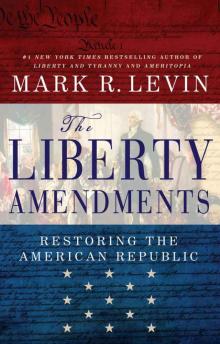 The Liberty Amendments: Restoring the American Republic
The Liberty Amendments: Restoring the American Republic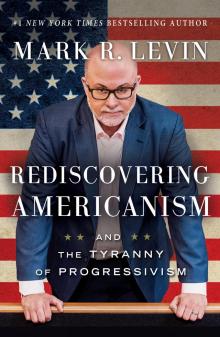 Rediscovering Americanism: And the Tyranny of Progressivism
Rediscovering Americanism: And the Tyranny of Progressivism Plunder and Deceit: Big Government's Exploitation of Young People and the Future
Plunder and Deceit: Big Government's Exploitation of Young People and the Future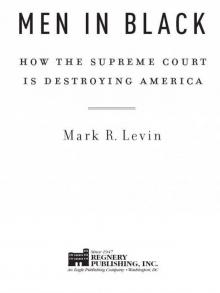 Men in Black: How Judges Are Destroying America
Men in Black: How Judges Are Destroying America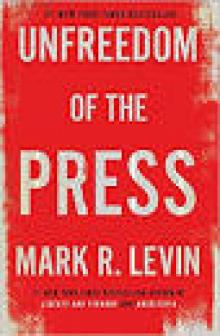 Unfreedom of the Press
Unfreedom of the Press Ameritopia: The Unmaking of America
Ameritopia: The Unmaking of America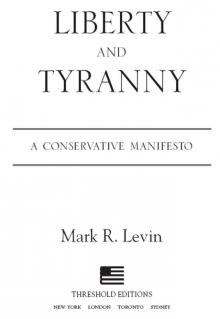 Liberty and Tyranny
Liberty and Tyranny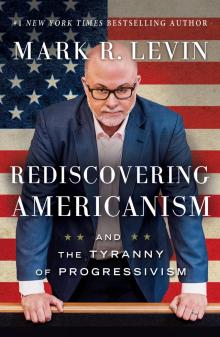 Rediscovering Americanism
Rediscovering Americanism Ameritopia
Ameritopia Plunder and Deceit
Plunder and Deceit